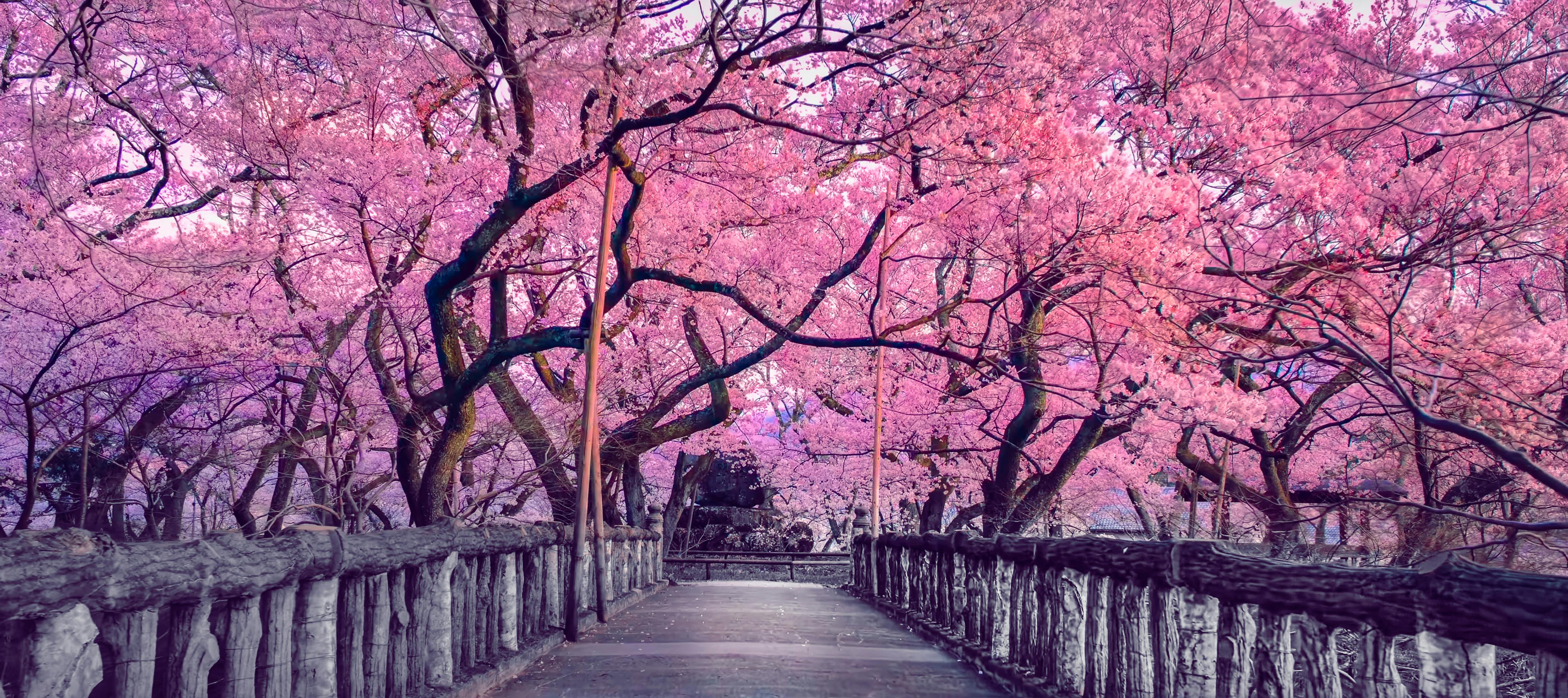An Insider’s Guide to Tokyo’s Neighborhoods
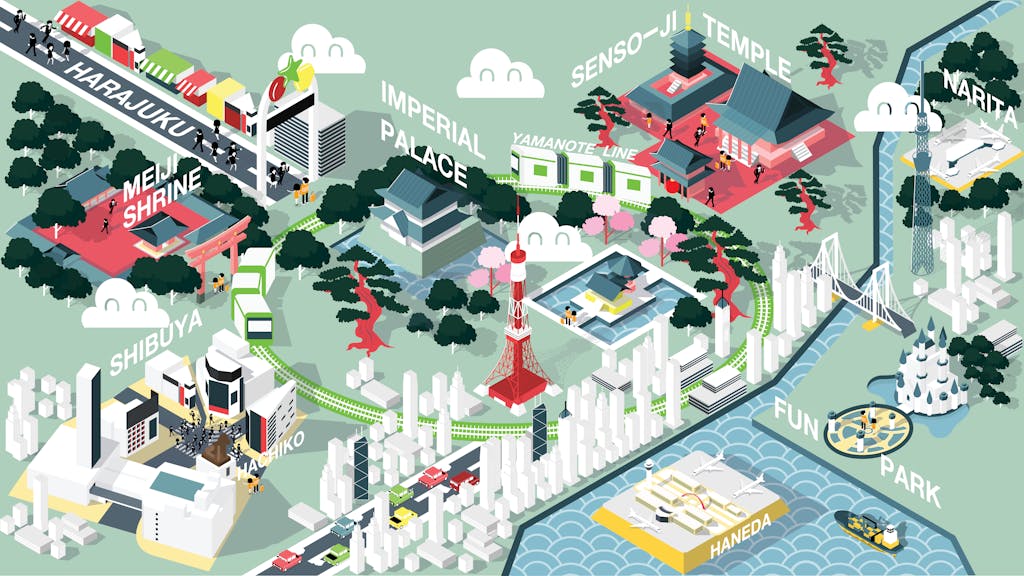
Tokyo is one of the world’s most exhilarating cities. But it also can be one of the most forbidding.
I lived here from 1977-1979, and the first entry in my journal reads: “Tokyo first impressions: an infinite, intimidating labyrinth of concrete and people. Its sheer mass of anonymous architecture and ubiquitous crowds is numbing, intimidating,and exhausting.”
Not exactly infatuation at first sight. But during the ensuing two years, I fell head over slippered heels in love with the city and have remained fervently so ever since.
What is there to love about this madcap metropolis? In a word: neighborhoods. Once you get to know the city, the neighborhoods are like villages, each with its own character and characters. Immersing yourself in almost any neighborhood will offer intimate insights, but when I want to show my friends the heart and soul of the Tokyo I love, I take them to three distinctive areas. So, let’s go.
Omotesando/Harajuku
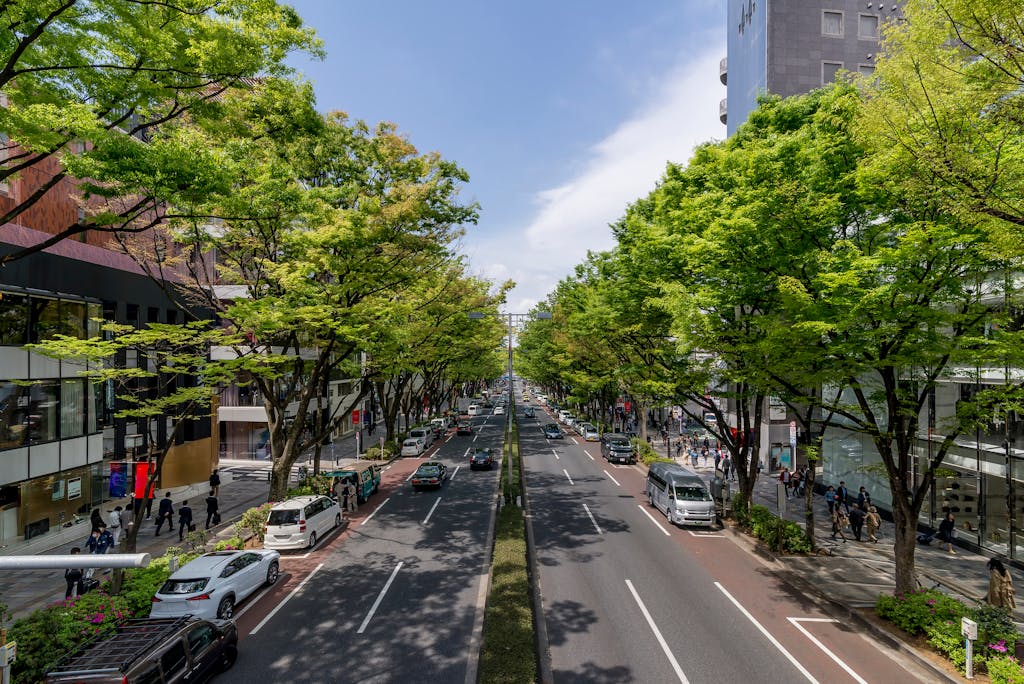
In brief: This area is about three miles west of the Imperial Palace. Come here for cutting-edge and kawaii architectural design and couture-culture; photo-worthy crepes and pancakes; and ancient, abiding Shinto spirits and rites.
I like to begin with the cutting-edge capital of couture and architectural design: the impressively broad, straight, elm-lined boulevard called Omotesando, in the Shibuya district of western Tokyo. Also known as Tokyo’s Champs Elysées, elegant Omotesando is home to top-end designers: Louis Vuitton, Christian Dior, Prada, Emporio Armani, Tod’s, Bulgari and Ralph Lauren, among others, along with Japan’s sartorial samurai, Issey Miyake, Yohji Yamamoto, and Rei Kawakubo.
An hour wandering here reveals the chic soul of Tokyo and the exquisite aesthetic sensibility behind it: Thin women in ethereally flowing skirts, pastel blouses, and high heels waft by with a studied insouciance. Side-street galleries such as Keita Maruyama’s Maison de Maruyama showcase fast-forward fashions that will make their way to Paris and New York next year. Equally stunning, especially in a city dominated by ferroconcrete-block architecture, many of the high-fashion headquarters here are as strikingly designed as the clothes within, employing imaginative uses of nature, glass, and light to create that same ethereal effect.
One more delightful, and edifying touch: Whether you buy a Gucci gown or a simple scarf, your shopping attendants will pour all their aesthetic passion into wrapping your purchase, and you’ll emerge with a lovingly, exquisitely packaged piece of Tokyo’s artful heart.

After this high-fashion foray, we’ll take a short walk to neighboring Harajuku, the capital of Tokyo’s kawaii, or cute, couture-culture. Here the streets are thronged with selfie-snapping cosplayers in ruffled blouses and flouncy skirts parading next to millennials meticulously outfitted in the latest mode du jour, be that battered blue-jean bellbottoms or tartan miniskirts with 6-inch-soled black boots.
The youthful exuberance and optimism here are infectious. Everyone is out to see and be seen, so let’s just go with the flow – and stop for an Instagram-worthy strawberry-chocolate crepe or fluffy mochi pancake along the way.
After we’ve had our fill of fashion, it’s time to feed our souls at the nearby Meiji Jingu Shrine, one of the largest Shinto shrines in the city. It’s a short walk from the chic-and-geek streets of Harajuku, Meiji Jingu seems a world away. This expansive, peaceful complex, built in 1920 on 170 acres of forested land, is one of the city’s spiritual centers, and on our visit we’re likely to see a procession of Shinto priests in white robes, high-peaked black hats, and giant wooden clogs parading somberly through the tree-shaded grounds.
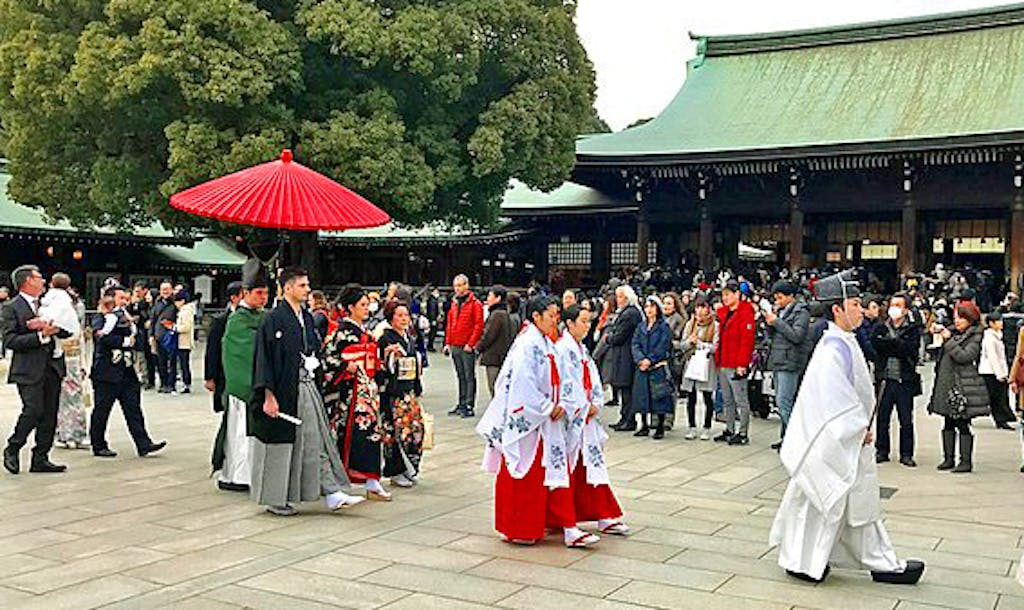
Meiji Jingu has also become a favored location for weddings, and on my last three visits, I have been fortunate to witness processions of brides in brilliant red and gold kimono and elaborate head coverings, walking in stately ceremony followed by a stream of family and friends in elegant kimonos and black suits. The air hums with hope and reverence as they pass, a reminder that belief in the Shinto spirits around us still beats fervently in the heart of Japan.
Asakusa
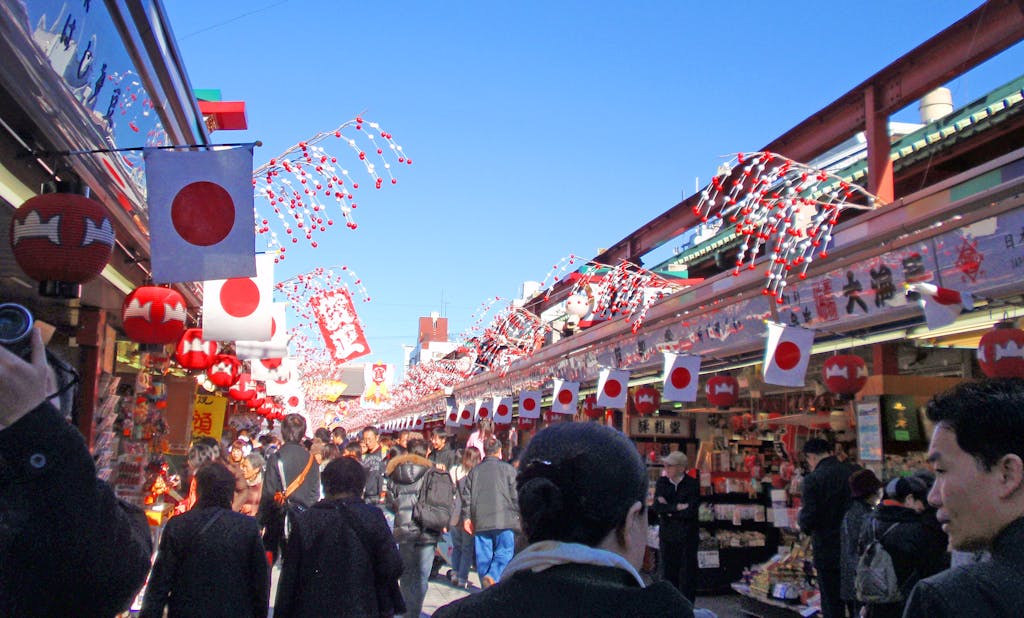
In brief: This area is about 1 mile west of the iconic Tokyo Skytree, which soars above the city skyline like a Japanese Eiffel Tower. Come here for an immersion in the sights, sounds, and tastes of Old Tokyo, where consumer temptations and Buddhist salvations dance in exuberant embrace.
From Meiji Jingu we’ll go to Tokyo’s other great spiritual center, the Buddhist Sensoji temple, in the eastern neighborhood known as Asakusa. Here is where the raucous, everyman ambiance of Old Tokyo begins to come to life. Sensoji is the oldest temple in Tokyo, tracing its history back to the 7th century. It’s also the most impressive.
To reach Sensoji, we’ll follow an 800-foot-long, paved, pedestrian-only walkway called Nakamise-dori, which is lined with hundreds of stalls, tiny temples to shopping that sell such varied gets as snacks and souvenirs and Buddhist amulets and antique kimonos. (If you’re set on acquiring an eye-catching robe to wear to the Captain’s Dinner, this is the place.)
We’ll approach an imposing three-story-tall, bright red entrance gate flanked by two temple guardians, and walk through it under a monumental red lantern emblazoned with black kanji characters.
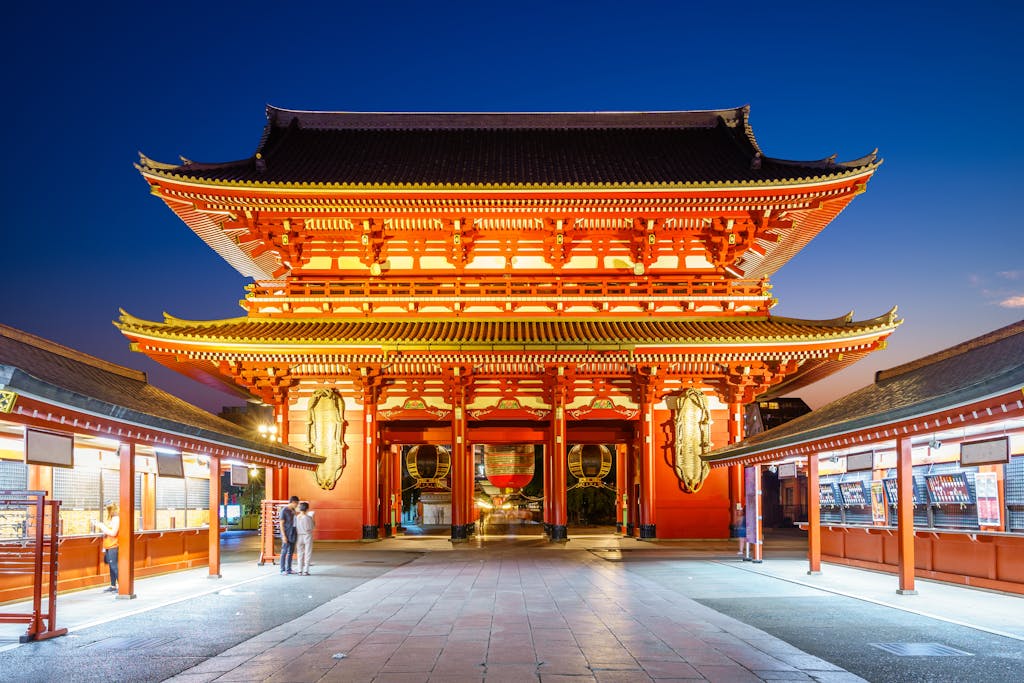
As we near the temple’s main hall, I’ll ask you to stop and close your eyes. Suddenly we’ll be transported to the 18th century, jostled elbow to elbow with hundreds of locals and visitors, surrounded by a babble of languages and shopkeepers’ calls, with the sweet scent of incense swirling from a giant earthenware burner in front of us, and the great bong of a bell emanating from deep within the sacred hall.
To further consecrate this eminently Japanese marriage of religious and commercial fervor, we’ll visit one of my favorite temple-side stalls to snack on kibi dango, sweet millet dumplings that have been the favored treat here for centuries.
Nippori/Yanaka/Nezu/Sendagi
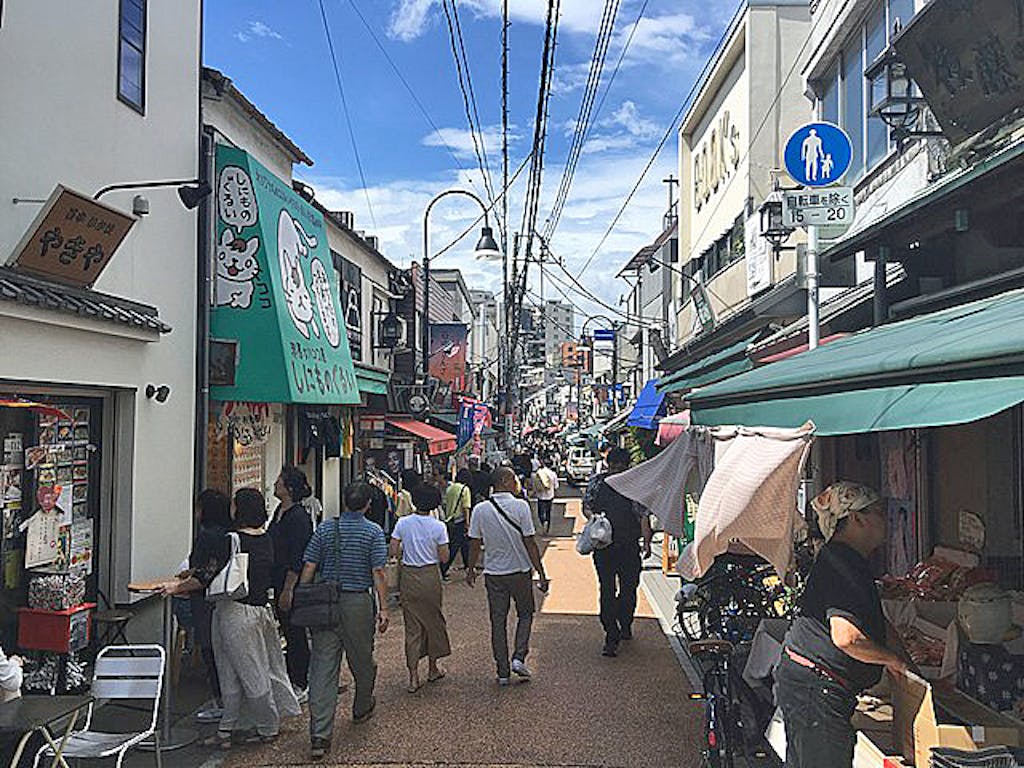
In brief: This area is about three miles northwest of Tokyo Skytree. Come here to savor the village atmosphere of an older, intimate, everyday, and everyman Tokyo: from old-style shops selling traditional arts and crafts to artful, energetic restorations that embody thoroughly modern aspirations.
From Asakusa we’ll continue our immersion in Old Tokyo by heading north to the neighborhoods of Nippori, Yanaka, Nezu and Sendagi. This is the heart of Shitamachi, the “low” or working-class town, where the soul of the older city still lives most vibrantly.
Unlike most of Tokyo, this area was not affected by the Great Kanto Earthquake and Fire of 1923 or the Allied fire bombings of WWII. As a result, it has a greater concentration of atmospheric, old-style buildings – two-story wooden shops with slatted sliding doors and gray-tiled roofs – than any other part of Tokyo. Many of these still have colorful noren curtains hanging in their doorways, indicating the shop’s trade or specialty.
To begin, we’ll take a short walk from Nippori Station to the stairway known as Yūyake Dandan, which leads down to Yanaka Ginza, the neighborhood’s main shopping district.
The soul of Tokyo is infused with neighborly kindness and hospitality, and we’ll see and feel that in abundance here, as we wander the alleys, immersed in the timeless intimacy of this village within the city. As we walk, longtime residents greet on another with smiles and bows; shopkeepers banter with regular customers and exchange jokes.
On my last visit, three women in autumn kimono beamed at blue-jeaned couples carrying babies in backpacks. Middle-school students in crisp white blouses and blue skirts skittered off their bikes to queue up for traditional hot-off-the-grill taiyaki fish-shaped cakes filled with sweet red bean paste. As the proprietor handed the still-steaming treats to each student, he addressed each by name and asked how the history class was going or whether the father had recovered from his cold.

To begin our tour, we’ll visit an inspiring site called Ueno Sakuragi Atari. This complex of three traditional wooden, two-story houses designed around a central courtyard and connected by narrow alleys was built in 1938 and was revived and restored in 2015 by a group of local artists using government funds.
Today the compelling complex combines the architecture and atmosphere of Old Tokyo with a suite of thoroughly modern shops, including a beer hall serving local craft beers, a bakery specializing in sourdough bread handmade every day using stone-ground wheat imported from Norway and a lovingly curated store selling high-quality salts, olives, oils and vinegars. It’s a wonderfully evocative example of the old entrepreneurial soul that fashioned modern Tokyo.
Next we’ll stop at gallery-like Midori-ya, established in 1908, which features the work of third-generation bamboo artist Suigetsu Buseki. His exquisitely shaped flower baskets are museum-worthy masterpieces. We’ll also find mundane marvels such as chopsticks, bookmarks and lunchboxes – as well as traditional Japanese insect cages – on sale here. Like all the shops we’ll visit, Midori-ya epitomizes the attentiveness to detail and commitment to quality that are essential to the city’s heart and soul.
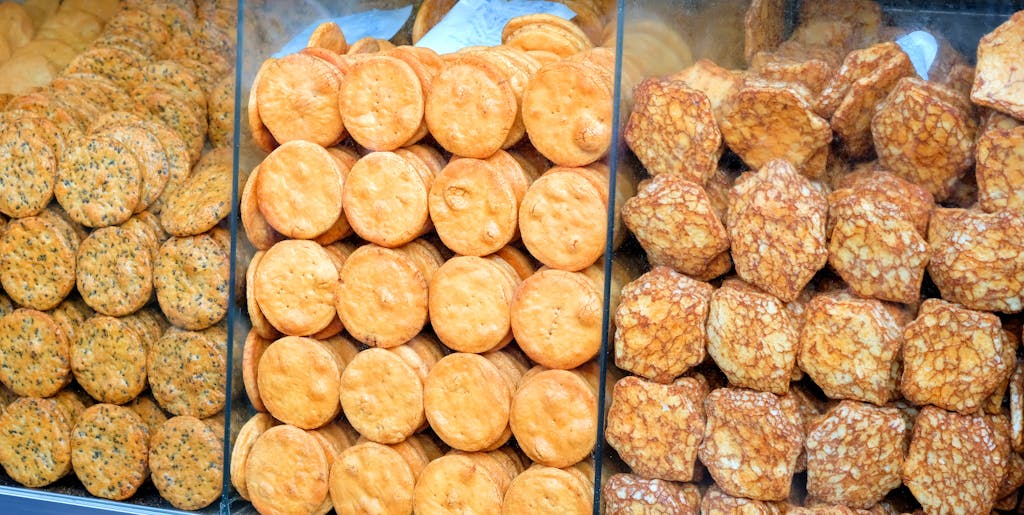
From Midori-ya we’ll move on to another exemplary outlet, Kikumi Senbei Sohonten, a tasty shrine dedicated to senbei rice crackers. Kikumi, founded in 1875, evokes Old Tokyo in its age-polished wooden exterior sliding, slatted wooden doors and glass cases displaying an astonishing variety of senbei. Try the soy-flavored square cracker for a taste of tradition.
To go with our rice crackers, we’ll next visit Kanekichien for some delicious green tea. In business for more than 80 years, this redolent shop specializes in teas from the Kakegawa region of Shizuoka Prefecture, which practices a particularly rigorous tea-growing method that produces award-winning leaves. Kanekichien also sells a carefully curated selection of pottery from throughout Japan. We’ll pause here to steep our souls in green tea peace.
Next we’ll move on to Hamamatsuya, founded in 1894, which offers a variety of traditional Japanese footwear. To complement the kimono you bought in Asakusa, you may want to buy some wooden geta clogs or zori straw sandals here.
Finally, we’ll visit lovely Kamenoko, which specializes in traditional Japanese tawashi scrubbing brushes and sponges; the miniature brush for scouring teacups, made from broomsedge grass, is a work of art. And we’ll lose ourselves in Kosho Same No Ha bookstore, walking through its bamboo-framed, tile-roofed entryway into an Old Tokyo wonderland of antique books, postcards and Japanese woodblock prints.

For a fitting end to our tour, we’ll repair to Kayaba Coffee, a wooden building that dates to 1918. I love this traditional kissaten coffee shop for its architecture and its atmosphere, and especially for its poignant backstory.
Mr. Kabaya opened the coffee shop in 1938, running it with his wife and adopted daughter, Sachiko. It closed 70 years later, after Sachiko’s death in 2006. Locals considered it such an essential and beloved fixture of Yanaka’s landscape that it was revived and reopened in 2009 by volunteers from an imaginative local art gallery called Scai the Bathhouse and the government-funded Taito Cultural and Historical Society.
After we admire the time-bridging furniture and artifacts on the first floor, many from Kabaya-san’s original shop, I’ll take you to the second-floor tatami-matted room. This is the ideal place to conclude our wanderings: savoring the café’s signature egg sandwich and Russian coffee (coffee mixed with cocoa), soaking in the ageless atmosphere, and contemplating the heart and soul of Tokyo, old and new.
